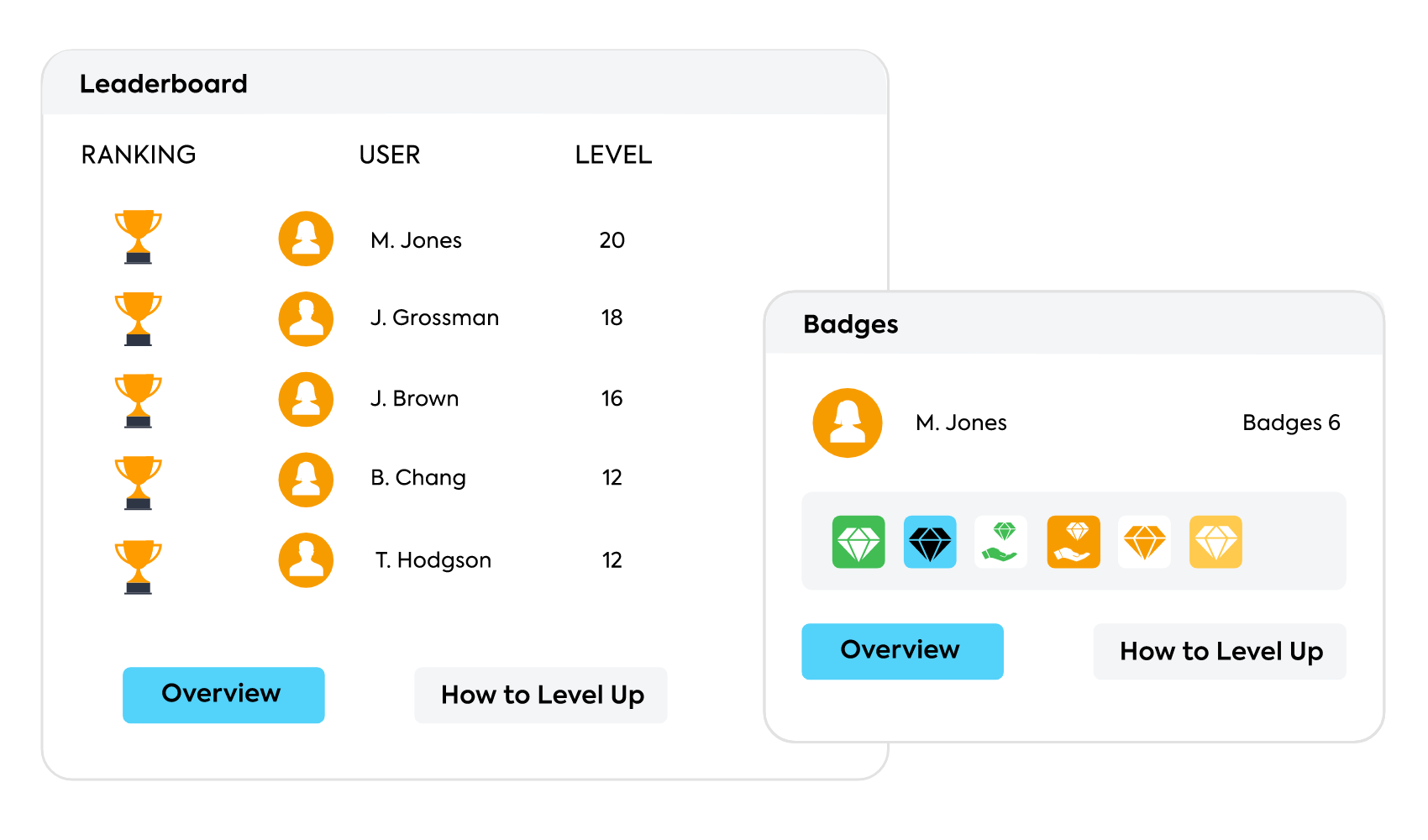It’s a brand new world of work. Amid the pandemic-fueled burnout and the Great Resignation, more and more companies are finding they can’t keep playing by the same rules. Not if they want to retain their employees.
The rise of hybrid workplaces has already changed the “where” work takes place. Now the “when” is also under examination, with many organizations offering flexible work schedules. Companies from Kickstarter and Shopify to Unilever and Shake Shack have all experimented with four-day workweeks (with various results). Others are doing rotating hours or implementing Flexible Fridays, where employees can choose to disengage from work or to focus on work but be offline.
While the idea of a 3-day weekend sounds amazing, a flexible work schedule is also creating new challenges. With employees and management alike trying to fit the same amount of work in less time, and rotating schedules complicating team get-togethers, training can take a back seat.
And that is definitely not good for productivity, engagement, growth—or for employee retention in the long run.
Flexible work: A blessing and a curse
The need for flexible work was always there—but it amplified during the pandemic. The lack of balance between work and family life, the stress caused by having to work hard as ever while also looking after kids or sick family members, brought a big chunk of the workforce to the brink of burnout.
In a recent TalentLMS and Workable survey on 1,200 US tech employees, 40% of the respondents stated lack of flexibility in working hours as the top reason for wanting to quit. Another survey shows that 83% of US workers would be in favor of a four-day workweek. In fact, they would be willing to work harder to attain it, given that their salary would stay the same.
It’s easy to see why. Flexible working hours and flexibility in remote work have a great impact on employees’ wellbeing, allowing them to rest, spend more time with family and pursue other creative interests. That, in turn, can make them more engaged and productive when they do work.
Yet the flipside of flexible work is not negligible. For employers, there is a marked increase in lack of control. It’s more difficult to touch base with your employees when they’re working at their own time, in their own space. Offering employees flexible work is an exercise in trust. And trust must be earned on both sides.
It’s not all perfect for employees either. Validation can be harder to get when no one is physically around to witness all their hard work; many of their efforts can be taken for granted. Team building and collaboration also take a hit, as it’s harder to bond when everyone works at different hours.
Focusing on training, even within a flexible work schedule, can help with all these things. It can prove employees’ dedication and strengthen team spirit, while also showing the company’s commitment to employee growth. But the question is:
How could training accommodate flexible work?
Employee training has also changed drastically over the years. The transition to eLearning was the first step toward making sure learners would have access to courses regardless of whether they worked from the office or from home.
But to accommodate flexible work, companies will need to take it a step further. Here are some ways to do that:
Centralize your training
A central hub for all your training content, one that employees can access both on their phones and on desktop, can be a lifesaver when everyone is working from different environments at different hours. Employees need to be able to access their training materials easily—and a remote training LMS offers exactly that.
For Marcus Verri, Deliveroo’s global sales training manager, getting an LMS in place was key in order to successfully train employees that were widely distributed. Deliveroo employees “were expecting to have one source of truth, to find quality content and actually manage their learning, and go back to the system in case they want to find it,” Marcus says.
When adapting your training strategy to accommodate flexible work, having that “one source of truth” is crucial.
Add gamification elements
Adding gamification elements like scoreboards, badges, and prizes to your training is a good idea in any environment. But when your employees are working in hybrid or remote environments and flexible schedules, they interact less than usual with each other—so gamification can strengthen camaraderie and friendly competition.
And because it all takes place on the same platform (your LMS), this can also be done in an asynchronous way. Employees will log in when they have time to learn and have the chance to see how their co-workers are doing at any given time.

Make your courses interactive with TalentLMS
Gamify training both for in-house and remote employees.
Easy to set up, easy to use, easy to customize.
Lean into VR
Along with gamification elements, adding VR elements in employee training is becoming increasingly relevant—to the point that it’s one of the top eLearning trends for 2022.
Virtual reality can be a great facilitator for group learning, no matter where your employees are located. And with the rise of the metaverse, learners can get hands-on experience via realistic simulations and practice new skills and procedures in a risk-free way.
Rely on self-paced learning
Although instructor-led training is important and should be a part of every eLearning program, focusing on self-paced learning can help a lot when your employees have a flexible work schedule. Allowing learners to take courses at their own pace eliminates the stress of trying to schedule webinars everyone can attend—and offers more opportunities to catch up on content.
Just make sure to set some (flexible) deadlines by which each content module will have to be completed. And, if needed, send reminders to employees who risk missing those deadlines. This way, you’ll ensure there won’t be a great lag in progress among team members.
Build microlearning sessions
Microlearning is here to stay, and for good reason. Dividing the content into easy-to-digest chunks makes it easier for employees to complete their training, even when they don’t have a lot of time available to study.
This aligns with the whole concept of flexible work and training. Some employees might choose to take mini-courses in-between other tasks. While others will prefer to book one larger slot and fit multiple sessions. The benefit of microlearning is that you give learners more control over how and when they’ll take their training.
Offer optional training courses
Optional training may sound counterintuitive when work is condensed in four days. Yet it can boost your employees’ confidence and their commitment to your company: it’s tangible proof that they’re working for someone who is willing to invest in their growth.
And it doesn’t have to be expensive or complicated. Giving your employees access to a frequently updated depository of ready-made courses will go a long way towards setting them up for success.
Meet TalentLibrary™
A growing collection of ready-made courses that cover the soft skills
your teams need for success at work
![]()

Make training a natural part of a workday
Training shouldn’t be an extra part of an employee’s day-to-day, but a natural part of what they normally do. Especially when on a flexible work schedule, your employees should engage with training not because they have to, but because it’s relevant to what they’re doing all day.
When people can’t grasp how a course could be relevant to their everyday work habits, then that course will remain an abstraction in their minds. And it’s very hard to engage with abstractions—or retain any useful information from them.
Test and adjust
Like with every new endeavor, switching your business into a flexible work schedule in 2022 is bound to have some moments of trial and error. This applies to your training as well.
As employees settle into new work routines and schedules, you may notice some parts of training are more impactful than others. Collecting training feedback often from your learners and keeping a close eye on your KPIs will go a long way towards pivoting your strategy when needed.
Flexible work requires new skills, too
It’s clear by now that transitioning to flexible work will require companies to rethink their training delivery methods. But the training content itself should also be re-examined.
Every change brings its own share of uncertainty. And with your teams more spread out than ever before, time-wise as well as geographically, your employees will need to develop new skills in order to feel confident and perform well.
Here are some of the soft skills you should be focusing on in 2022:
- Asynchronous communication: Communication between distributed teams has its own etiquette. Your employees will need to learn to express themselves in writing more succinctly than ever before. They’ll need to get to the point quickly and exercise their better judgment when it comes to asking questions or clarifications (as they won’t necessarily get answers in real-time). Thankfully, all these things can absolutely be taught.
- Ownership: Flexible work means that your employees will often have to take ownership of their work. This can be tricky if they’re used to a system where they’ve been closely managed by their supervisors. Teaching people to take ownership goes hand in hand with building confidence and not being afraid of making mistakes.
- Agility: Perhaps one of the most important soft skills nowadays. The pandemic proved that things can change fast—and the companies that kept growing were the ones that were able to pivot and adapt. Your employees need to develop an agile mindset so they can tackle any obstacles and changes that come their way.
- Avoiding burnout: Yes, that’s a skill. Many of your employees may struggle with the new flexible work arrangement, and feel the need to always do “more” in order to make up for the lost time. And if they don’t know how to listen to their body or respect their limits, this could easily lead them to burnout. Teaching them how to better divide their energy and focus and when to rest, can help avoid that.
- Proper delegation: Similarly, many of your employees or managers may take on more tasks than before—perhaps out of uncertainty whether they can trust their team members to do their part. Learning to properly delegate tasks and leaning into each other’s talents is vital to any successful team.
- Feedback: Flexible work and asynchronous communication will require frequent and actionable feedback in order for your team to thrive. Your managers in particular will need to re-learn how to offer feedback to their distributed team members since they won’t always be able to glean the other person’s reaction (like they would in an in-person meeting).
Revamping your training strategy for flexible work
Flexible work is an attractive idea with many benefits—but it should not equate to “more hassle, less training.”
Your employees’ career development is important (both for them and for the future of your company) and it shouldn’t be sacrificed in order for them to work faster or more. If you want your flexible work strategy to have the desired results, your training strategy should also follow suit.



